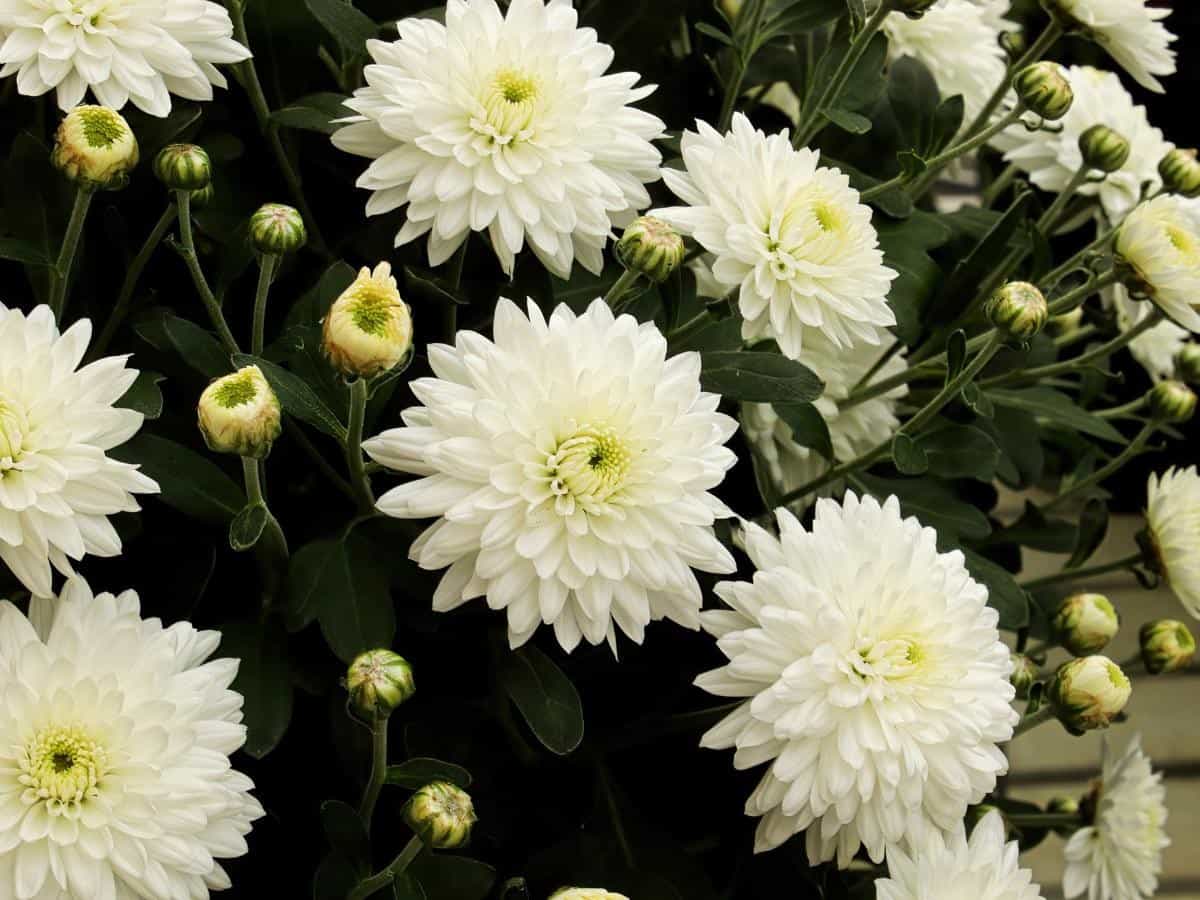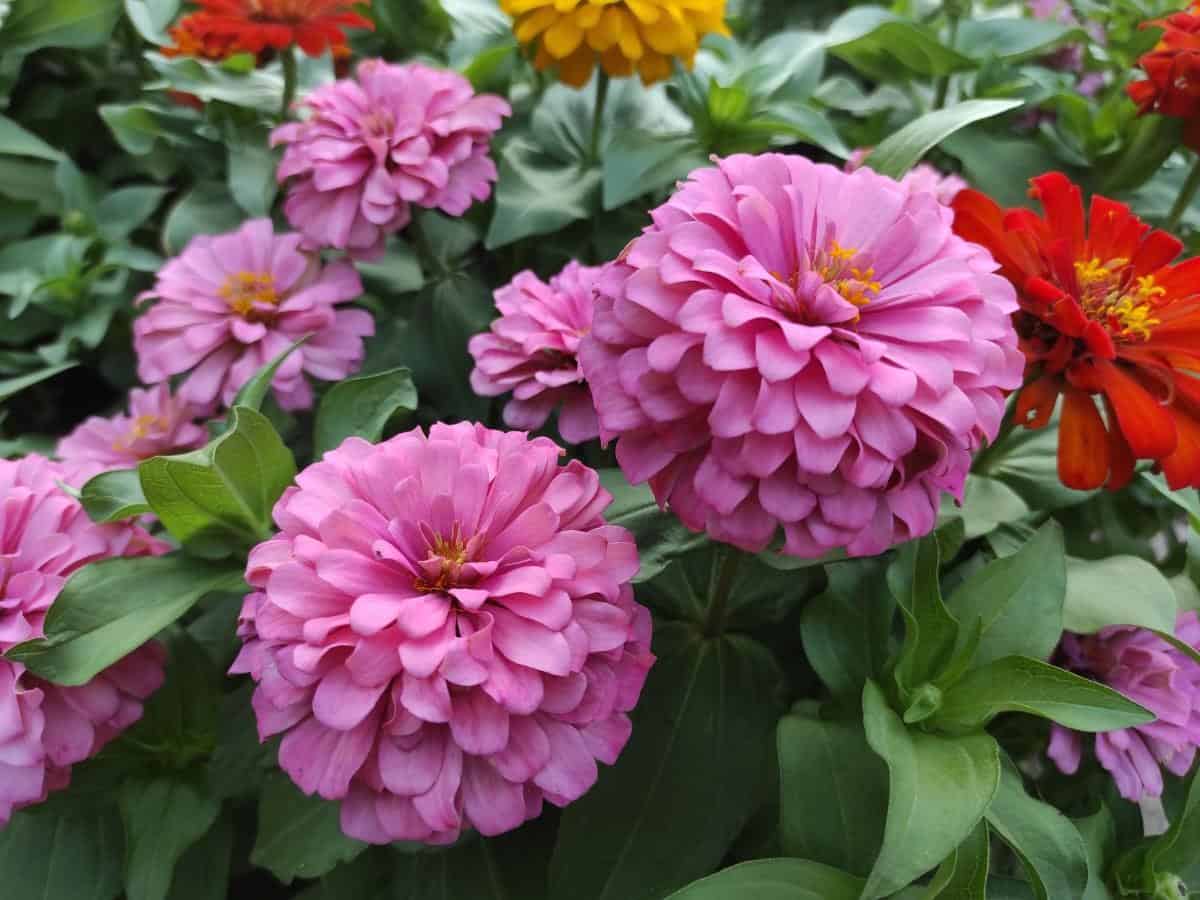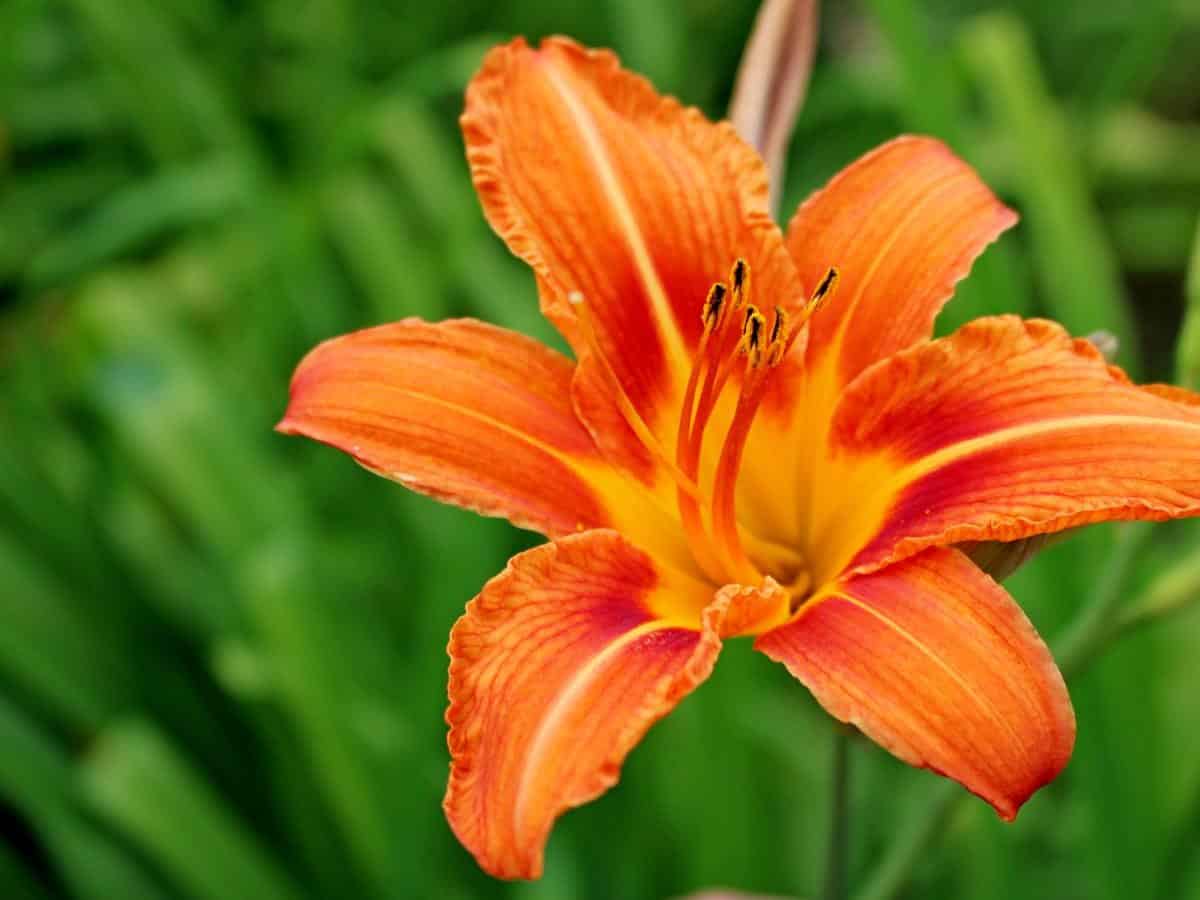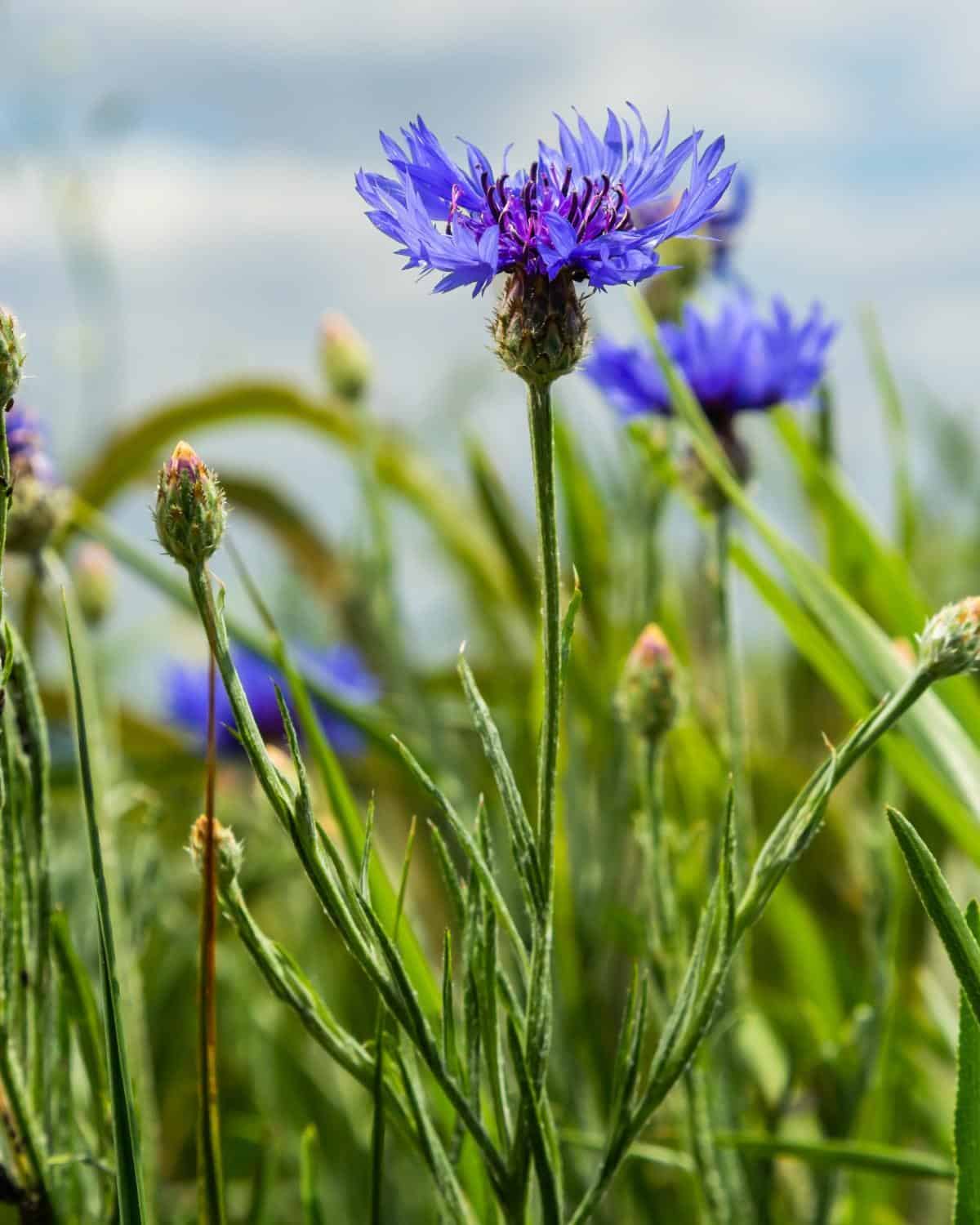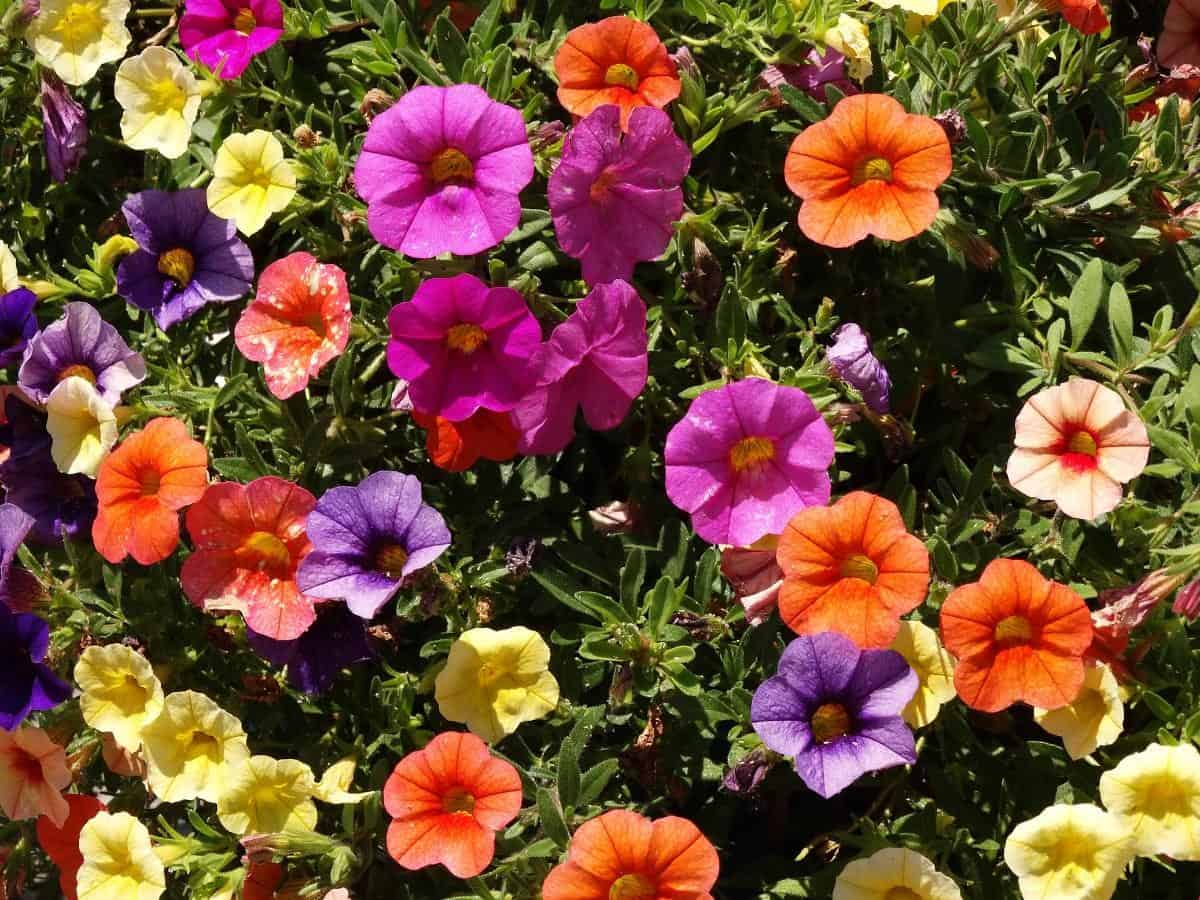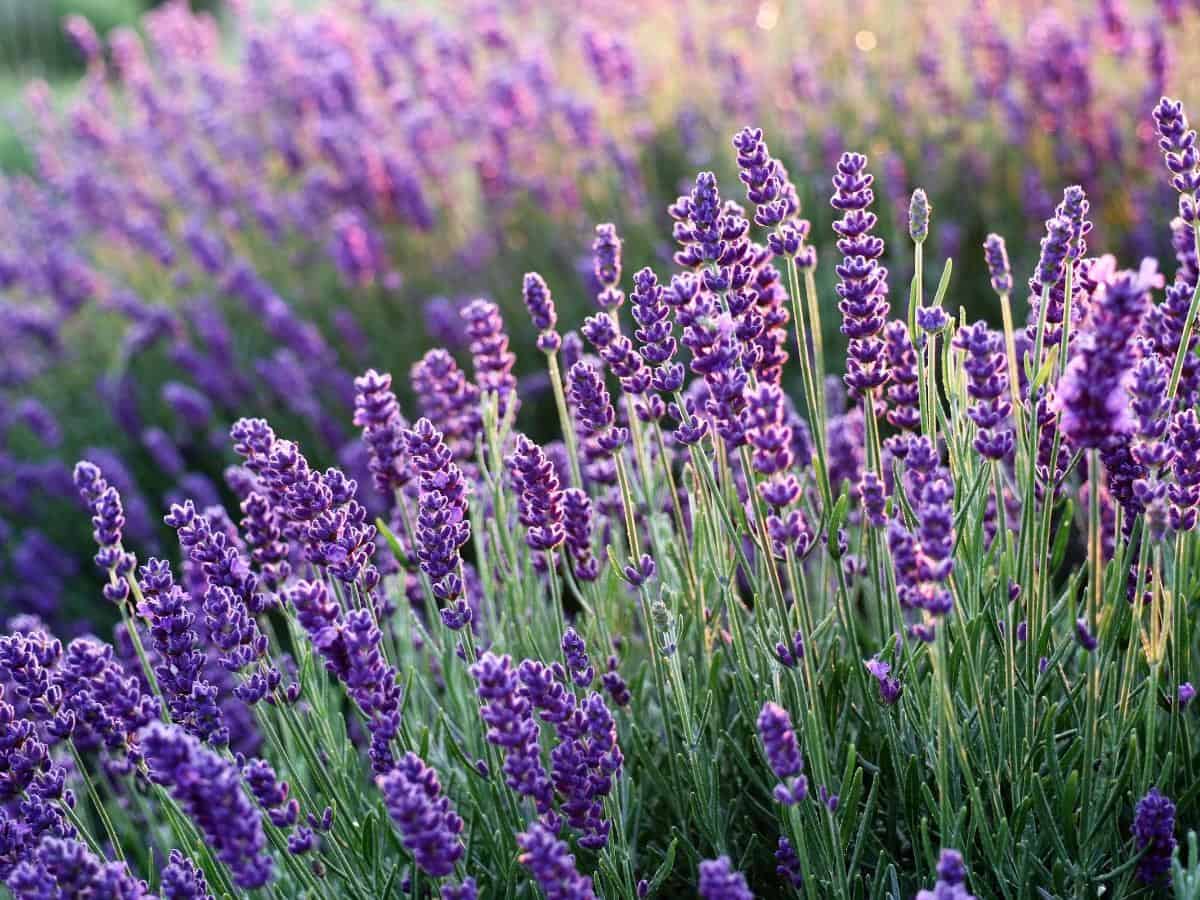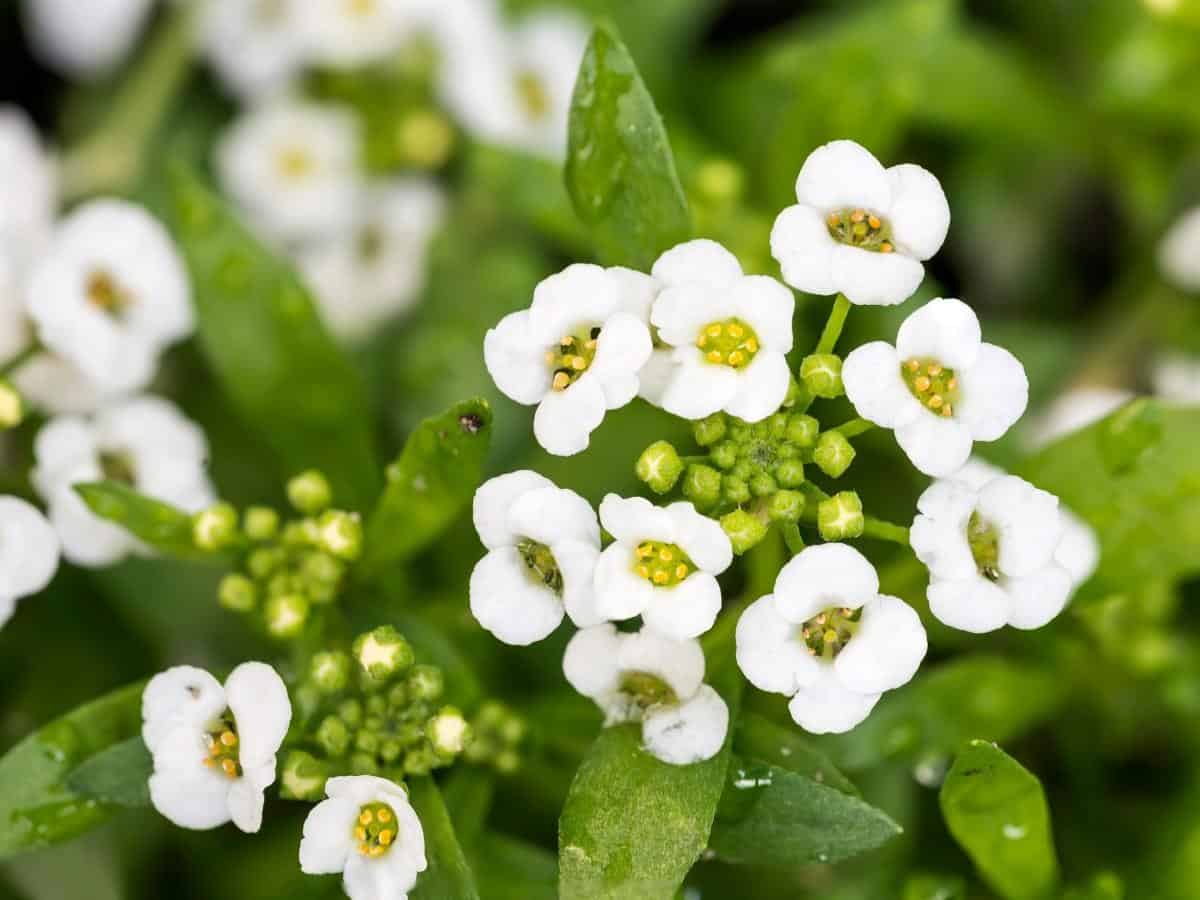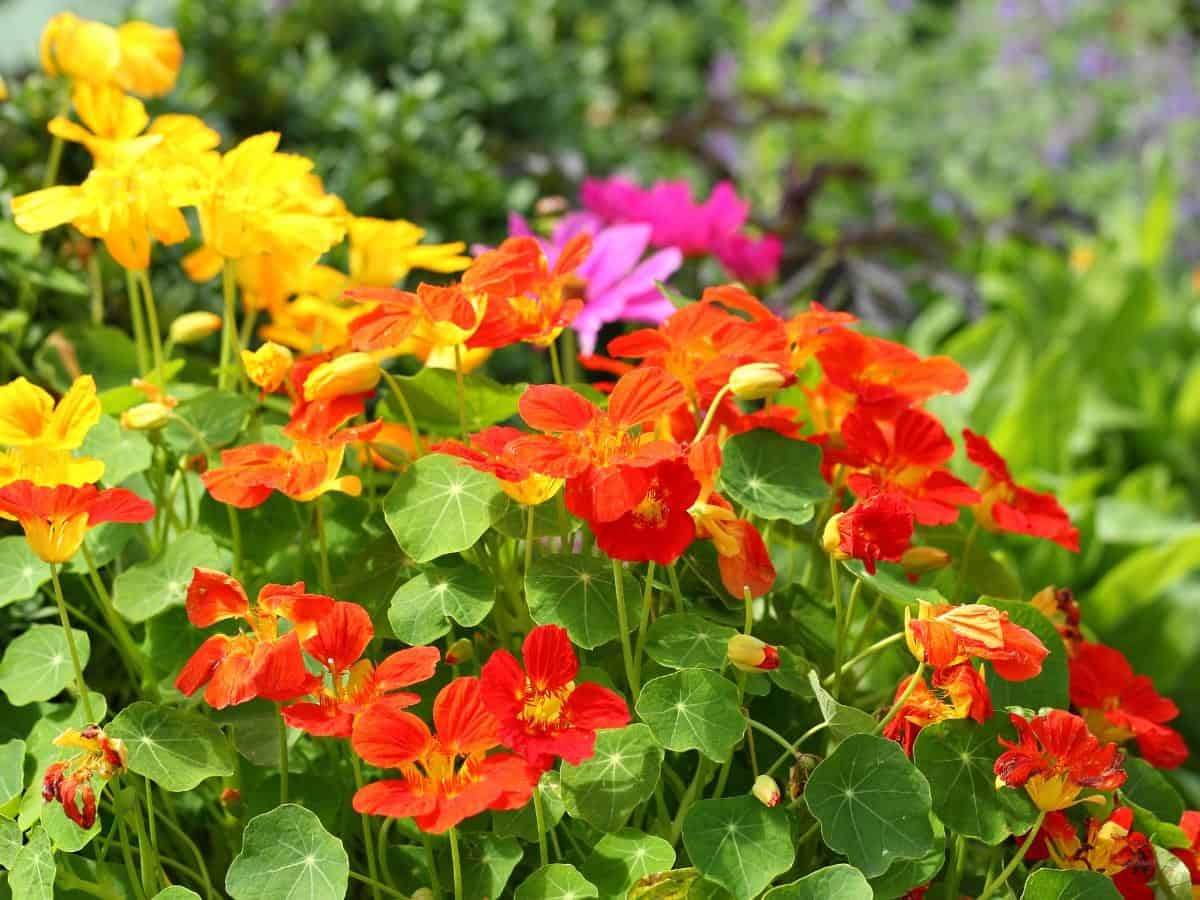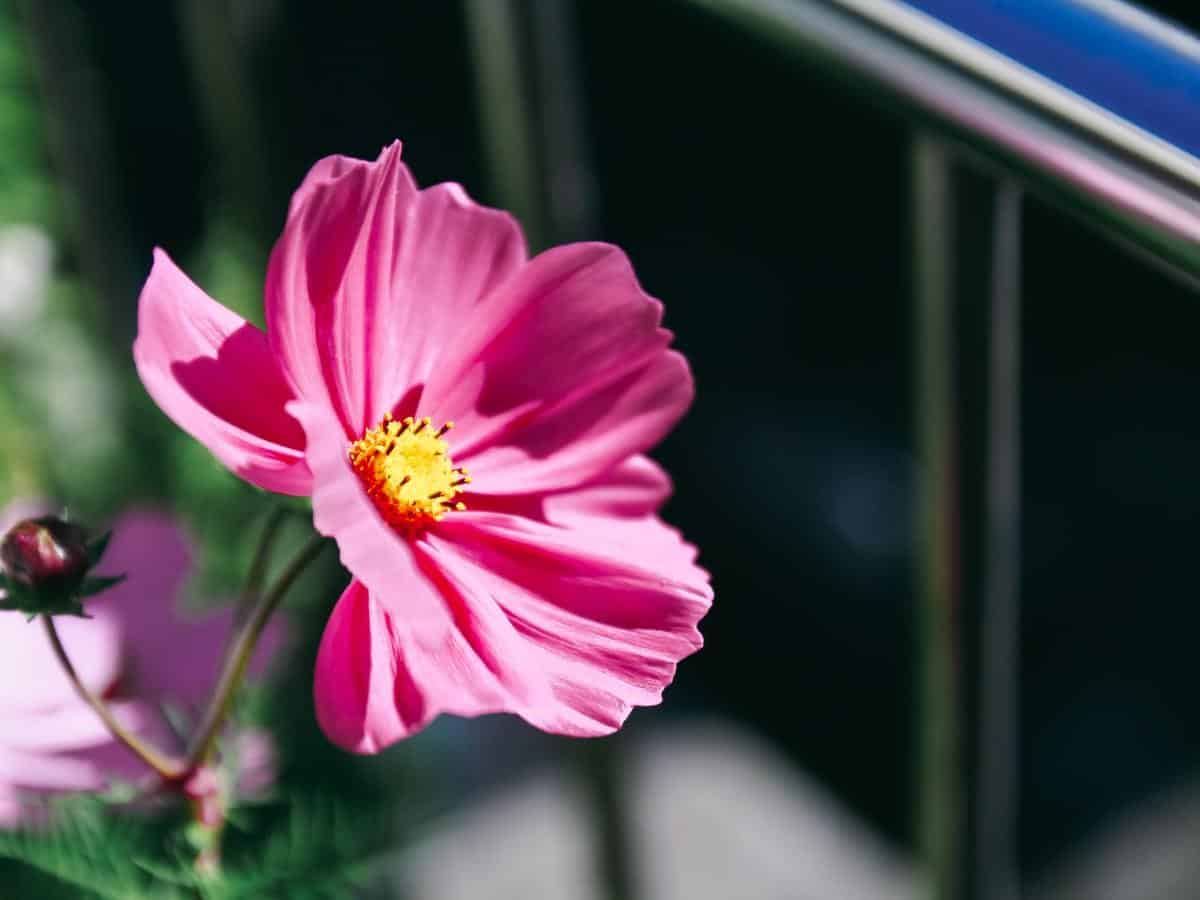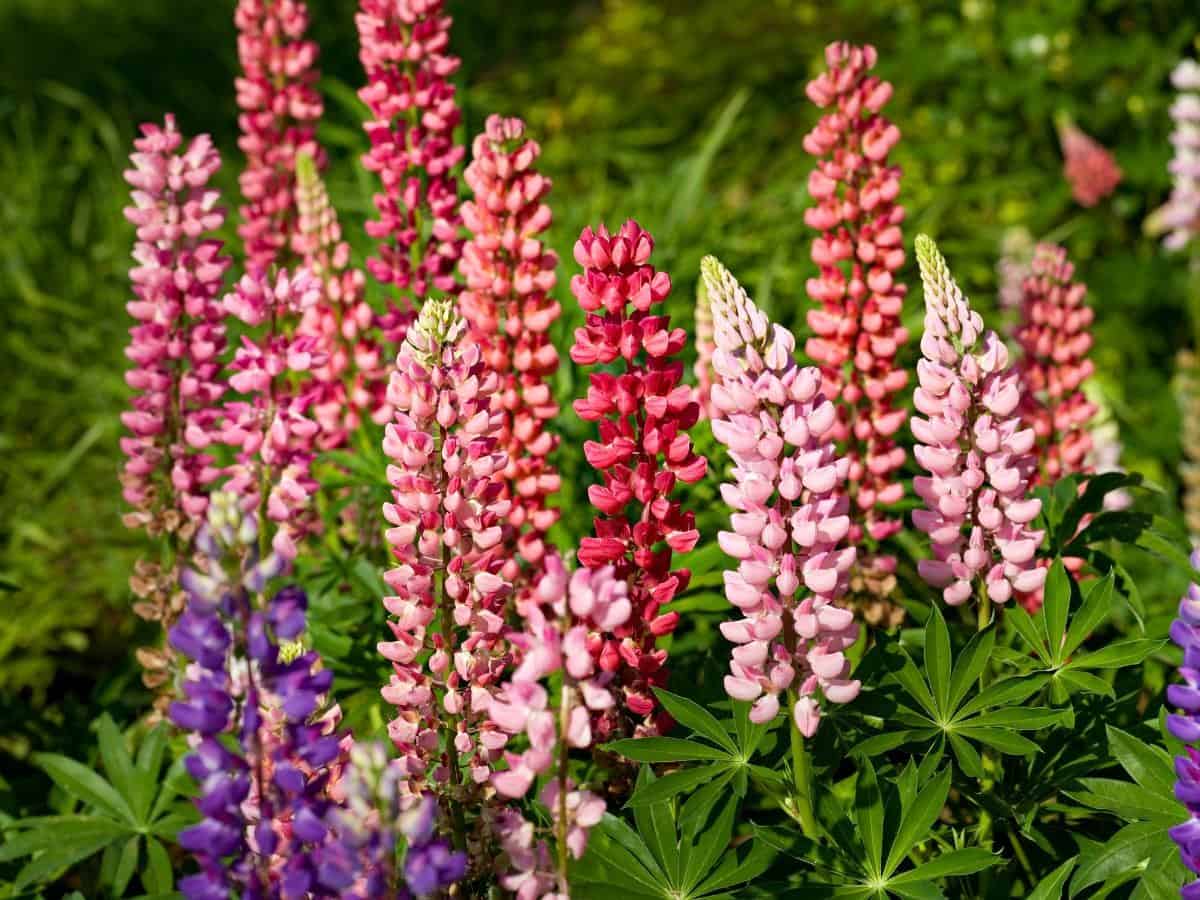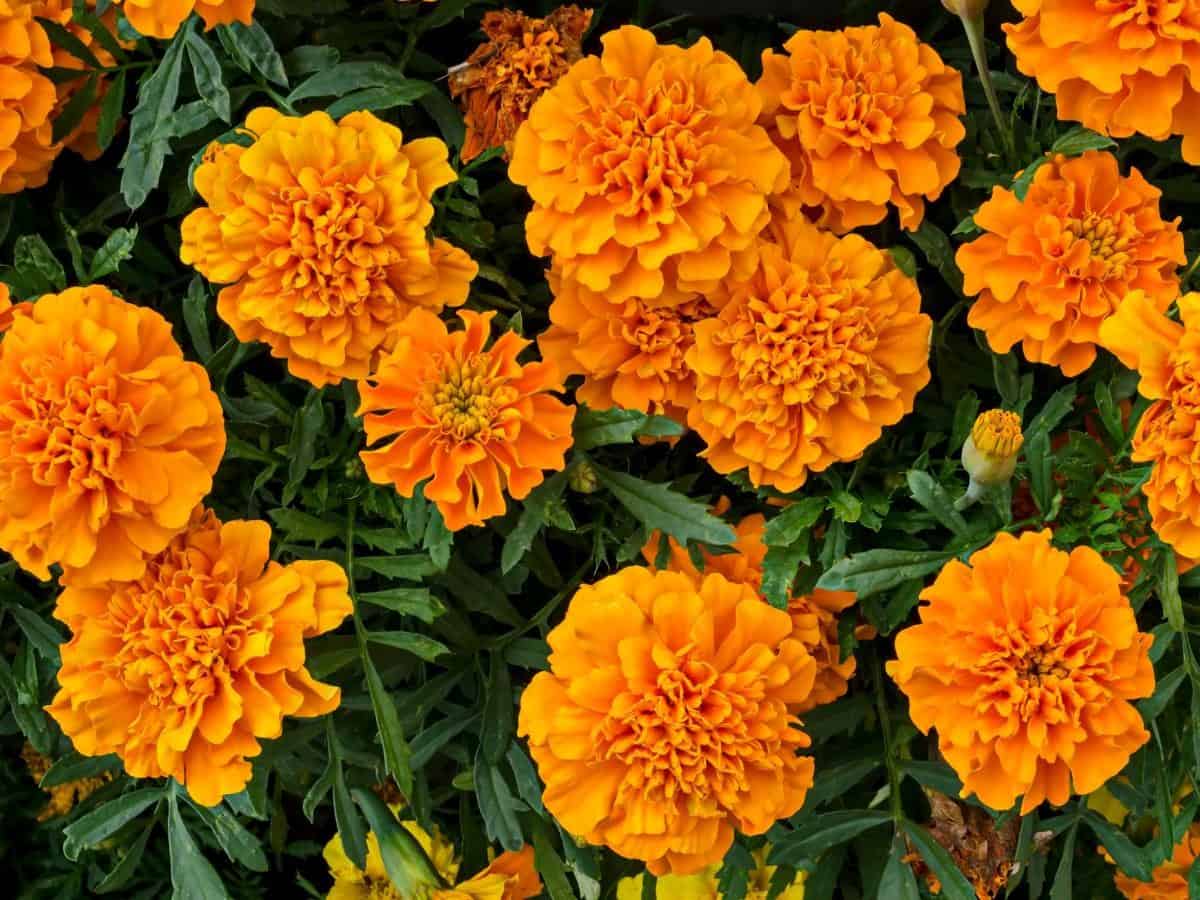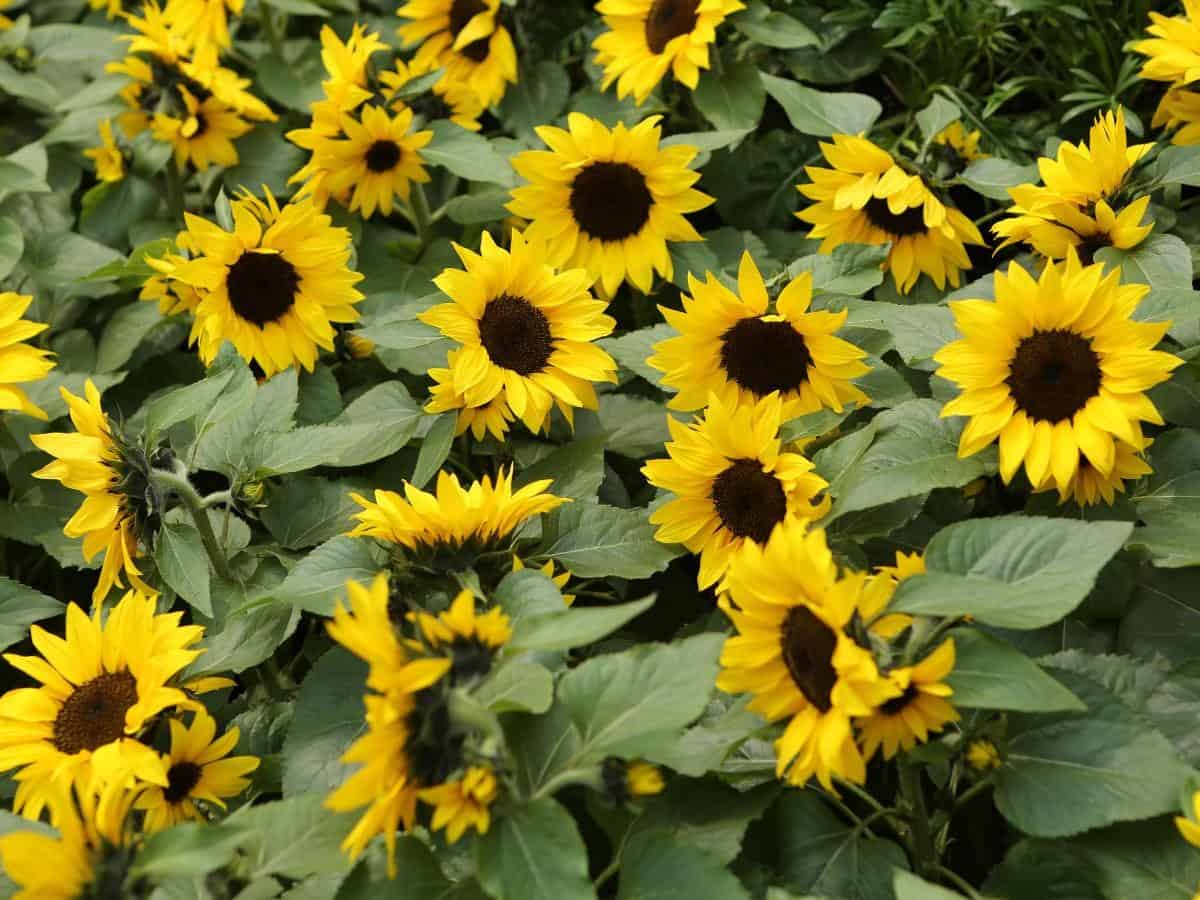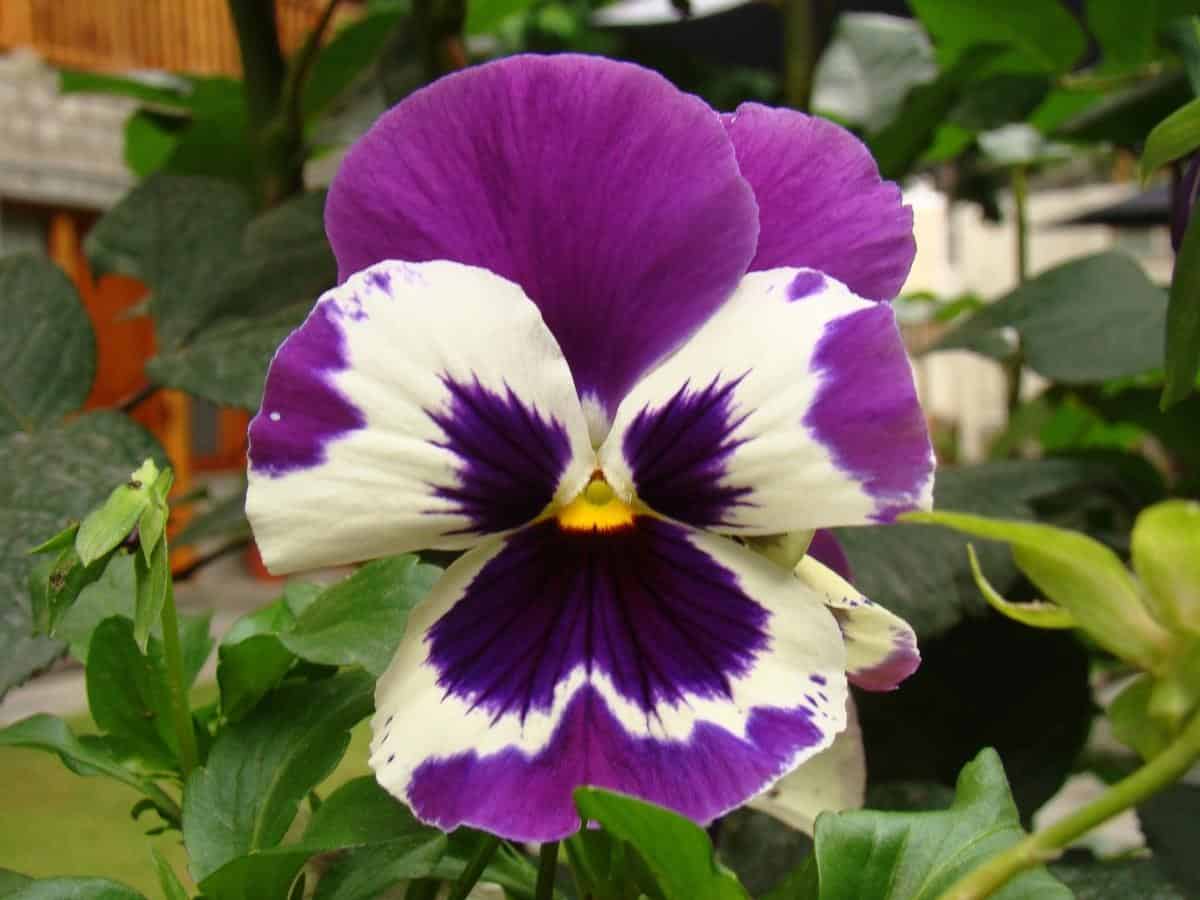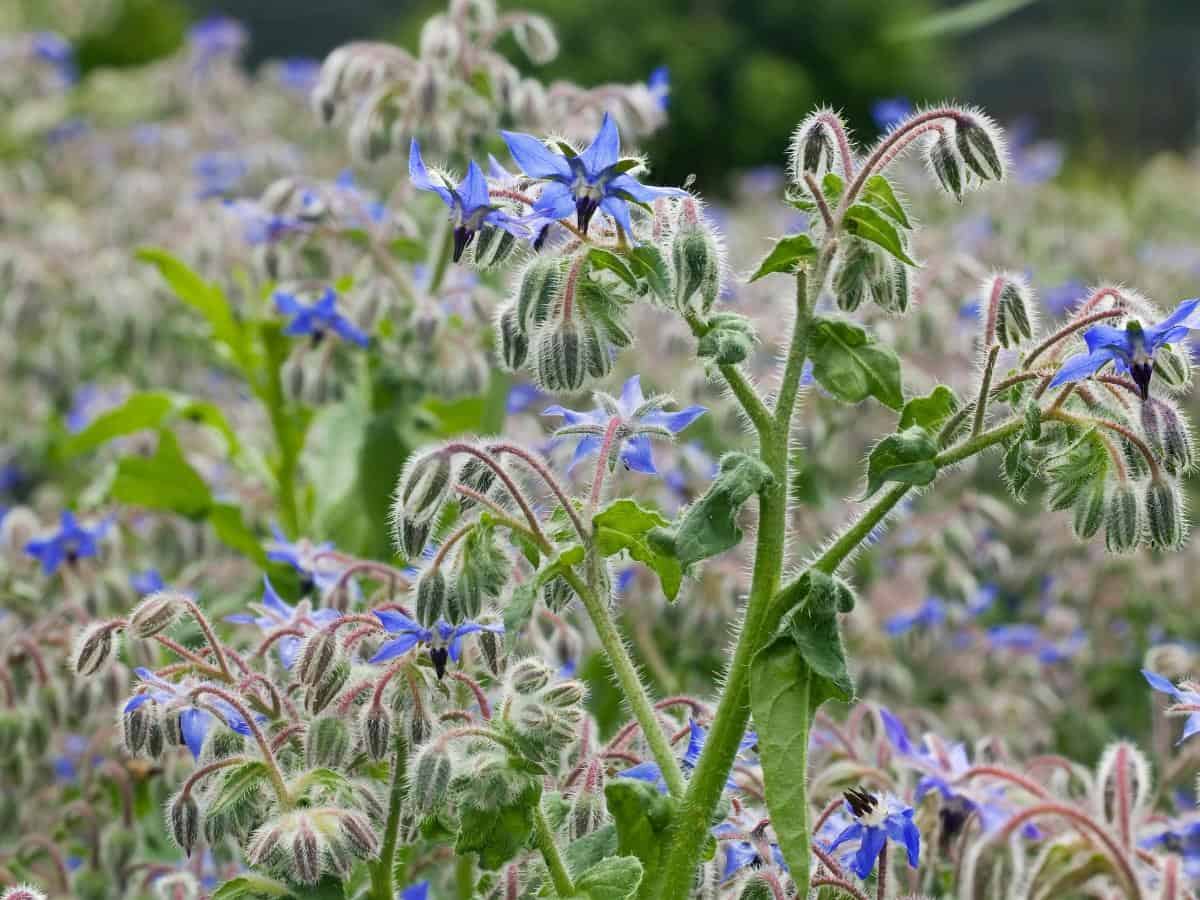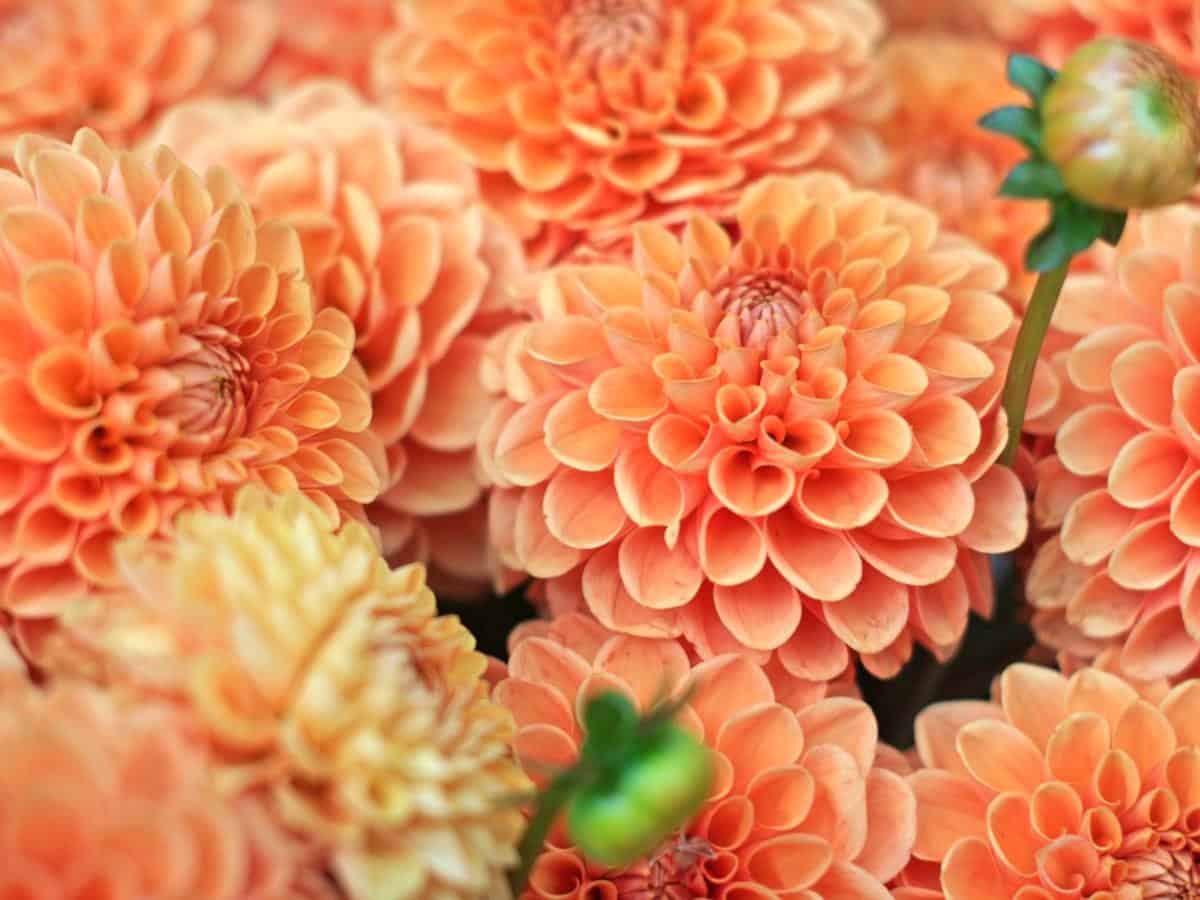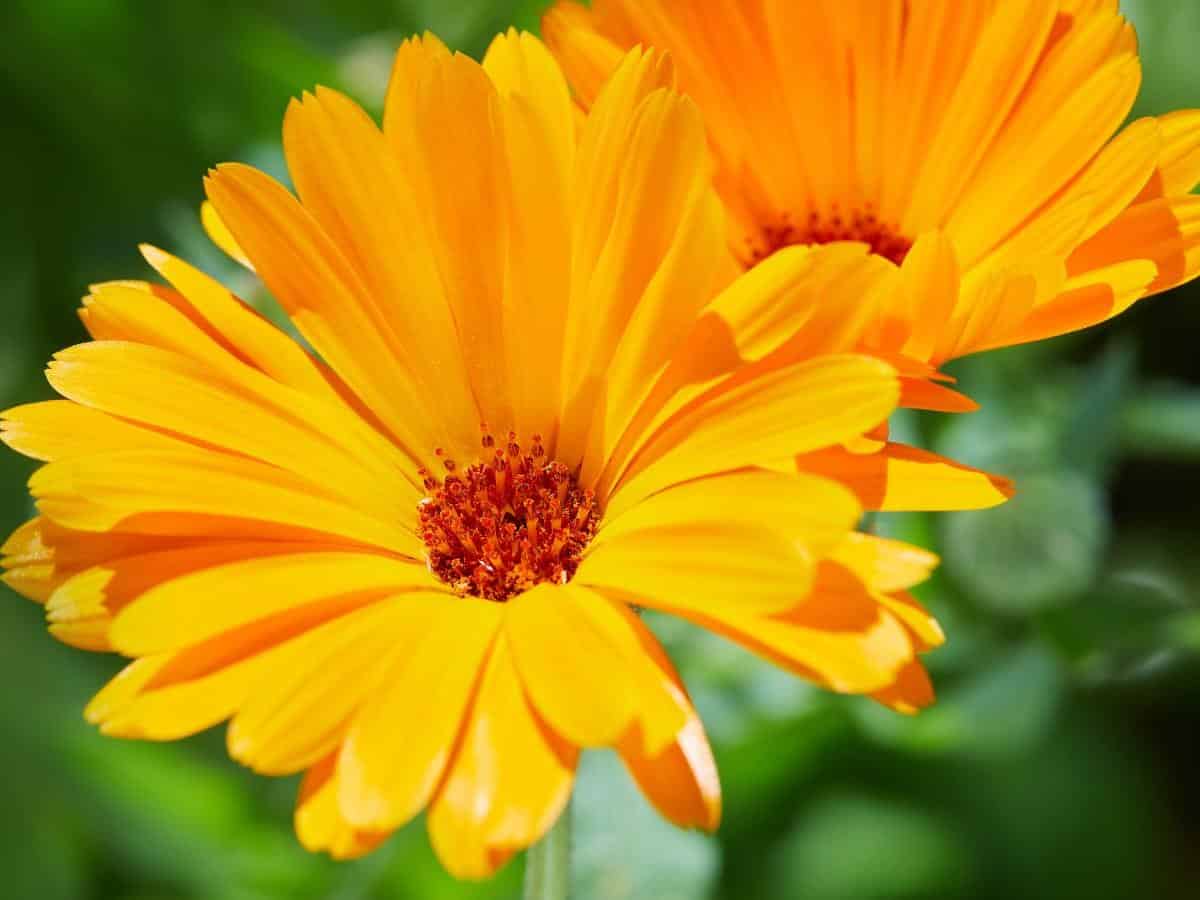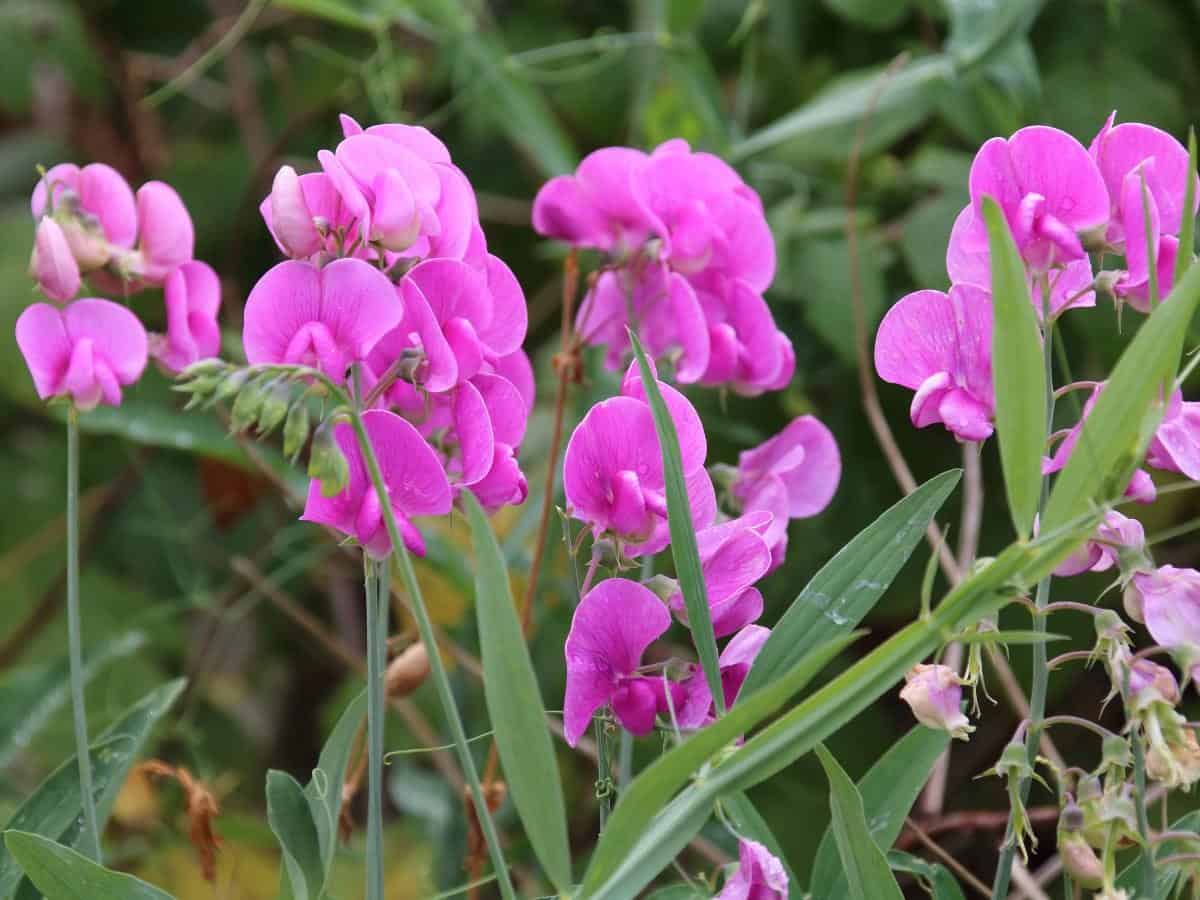When designing a vegetable garden, it’s not necessary to focus solely on cultivating veggies. Incorporating flowers can significantly enhance the aesthetic appeal of your outdoor space. Not only do they offer complementary benefits as good companion plants, which can help deter pests and attract pollinators, but interplanting also allows you to optimize space and reduce time spent tending to separate areas.
The added bonus is that these blooms can be harvested to adorn vases indoors or add a pop of color to your decor. As you tend to your veggies, simply snip the flowers as needed to enjoy their beauty in multiple ways. Consider adding some of the 17 flower varieties suitable for this dual-purpose gardening approach – and discover the joy of having a lush, vibrant garden that serves both practical and decorative purposes.
Why Add Flowers to Your Vegetable Garden?
Flowering crops can bring numerous benefits to your vegetable garden beyond just adding a pop of color. In fact, strategically combining these crops can boost yields, improve soil health, and even deter pests. The key is to experiment with different plant combinations to find what works best for your specific garden.
Here are some ways that flowers can support your vegetables:By attracting beneficial insects, like ladybugs that prey on common vegetable pests, you can maintain a natural balance in your garden. Zinnias, lupine, and alyssum are just a few examples of flowers that can draw these helpful bugs. Flowers can also enhance soil quality by improving drainage and boosting nitrogen levels.
Lupine is particularly effective at increasing nitrogen availability, while cosmos and zinnias promote healthy drainage. Attracting pollinators like bees with flowers such as alyssum, zinnias, and cosmos can encourage fruit set and overall plant productivity in your vegetable garden. In addition to their benefits for vegetables, flowers can also help deter predators. Lavenders repel mosquitoes and mice, while sunflowers keep raccoons at bay.
Some flowers have natural pest-repelling properties, such as marigolds and petunias, which can keep pests like aphids away from your vegetables. Nasturtiums and marigolds can even lure in harmful pests, keeping them away from your valuable crops. And let’s not forget the aesthetic benefits of flowering crops! A colorful array of flowers can elevate the visual appeal of your garden, making it a joy to tend and behold.
Flowers to Complement a Vegetable Garden
Zinnia
Zinnia elegans, an annual plant, is a nectar-rich magnet for bees and pollinators, also attracting hummingbirds to your garden. Its pale pastel varieties lure insects like Japanese beetles, making it a potential trap crop. However, be cautious when growing this plant if you’re concerned about pests spreading to other plants. Zinnias’ vibrant flowers can be used as natural décor in your vegetable garden, with the added benefit of quickly regenerating after pruning.
This annual’s low maintenance and rapid growth make it an excellent choice for filling gaps between harvested vegetables.
Daylily
Daylilies (Hemerocallis spp.) are renowned for their ability to attract pollinators and hummingbirds with their vibrant blooms. This hardy perennial is remarkably easy to maintain and can thrive in various conditions. Its extensive growth habit, reaching over 5 feet tall, makes it essential to consider when planting among smaller vegetables or flowers. The plant’s robust nature allows it to outcompete weeds effectively.
Notably, Daylilies require full sun and moderate watering, making them relatively pest-free and unappealing to rabbits. However, deer may find this delicacy irresistible. As for soil requirements, deep fertile, medium loamy soil with a pH leaning towards acidic is suitable. This plant can tolerate heavy clay or sandy conditions as well. In terms of companion vegetables, Daylilies pair well with tomatoes, carrots, leafy greens like Swiss chard, kale, mustard green, and lettuce.
USDA growing zones 3-10 provide an ideal environment for these perennials to flourish.
Cornflower
The cornflower, also known as Centaurea cyanus or bachelor button, is a stunning annual that not only thrives in the wild but also makes a fantastic addition to any vegetable garden. Its delicate, carnation-like blooms boast a deep blue hue and have been known to attract a variety of pollinators. This disease- and pest-free beauty has earned its place among gardeners due to its low maintenance requirements.
In fact, cornflowers are often considered weeds in grain fields such as barley, rye, wheat, and oats, but their versatility allows them to flourish in many climates around the world.
As a bonus, cornflowers produce stunning blooms for approximately ten weeks (from May to mid-July), making them an excellent choice for gardeners looking to add some visual appeal to their plots. To encourage continued blooming, simply deadhead spent flowers and enjoy the extended display of beauty.
Not only can this lovely plant tolerate hot summers but also light frosts, making it an ideal addition to gardens in USDA zones 2-11.
Petunia
Petunias (Petunia spp.) are a popular choice for gardeners due to their unique trumpet-shaped blooms and natural pest-repelling abilities. These annual flowers are effective at deterring common garden pests like asparagus beetles, leafhoppers, Mexican bean beetles, and tomato worms, making them an excellent companion plant for vegetables such as beans, corn, onions, and tomatoes.
They thrive in moist, well-drained soil with full sun exposure, making USDA growing zones 10-11 ideal for cultivation. One of the benefits of growing petunias is their low-maintenance requirements – simply prune dead flowers to encourage blooming, and provide consistent watering, as they can tolerate wet conditions without issue.
Lavender
Lavandula sp., a stunning addition to any garden, offers numerous benefits beyond its vibrant purple-blue blooms and intoxicating scent. One of the most notable advantages is its natural ability to repel unwanted visitors. Deer, for instance, tend to shun lavender, making it an excellent companion plant for those struggling with deer damage.
Moreover, this lovely herb has been shown to significantly reduce tick populations in the garden, protecting you, your pets, and other plants from these pesky pests. Lavender’s pest-repelling properties also extend to moths, such as green cabbage moths, and even mice, making it a valuable addition to any vegetable garden or garden bed.
Sweet Alyssum
The sweet alyssum (Lobularia maritima) is a charming perennial that offers a dual benefit to your garden. Its tiny, vibrant flowers create a lush ground cover and natural mulch for surrounding vegetables, while also attracting beneficial insects like hoverflies and ladybugs that prey on pests and protect your plants. Additionally, the plant attracts pollinators such as butterflies and bees, making it an excellent addition to any vegetable garden.
This low-maintenance perennial is adaptable to various conditions, including cold temperatures where it can continue to bloom. It thrives in USDA growing zones 5-9 and can survive in a range of soil types, from moist and well-drained to neutral or acidic. Full or partial sun exposure is suitable for this plant, which makes it an ideal choice for gardeners with varying levels of sunlight.
Companion vegetables like Brussels sprouts, cabbage, broccoli, eggplant, potatoes, and lettuce benefit from the sweet alyssum’s presence, making it a valuable addition to any vegetable garden.
Nasturtium
Nasturtiums (Tropaeolum majus) boast a vibrant array of colors, including orange, red, yellow, and cream. This annual plant excels in slightly acidic, well-draining soil with poor to average fertility. It thrives under full sun to partial shade conditions, making it an ideal addition to many gardens. In terms of hardiness, nasturtiums are not specific to a particular USDA growing zone, as they can be grown as an annual.
When paired with other vegetables like brussel sprouts, radishes, cabbage, winter squash, kale, and broccoli, nasturtiums provide natural pest control for unwanted pests like squash bugs and beetles. Not only do these flowers attract aphids, which can be trapped to keep your garden pest-free, but they’re also edible. It’s recommended to set aside some disease- and pest-free nasturtiums to enjoy later.
The plant’s seeds are relatively easy to collect and store for the next growing season, with some varieties self-seeding. For those looking to start their nasturtium journey from seed, it’s essential to scarify them first by lightly sanding or nicking the surface. This simple step can significantly speed up the germination process.
Cosmos
Cosmos flowers (Cosmos bipinnatus) boast stunning blooms that not only captivate the eye but also attract a diverse array of helpful insects and pollinators. The flower color palette is remarkably varied, allowing you to select a hue that harmonizes with your vegetable garden. For instance, if you’re seeking to entice lacewings, opt for vibrant orange or white varieties.
These green lacewings are renowned for their impressive pest control abilities, consuming a wide range of unwanted pests including scales, thrips, and aphids. As some of the most beneficial insects around, introducing them to your garden is always a wise decision, as it can prevent pest infestations and maintain a healthy balance in your vegetable patch.
Lupine
Lupines (Lupinus x hybrida) are a striking addition to any garden, boasting vibrant flowers in shades of pink, yellow, blue, white, and purple. Beyond their ornamental value, these legumes also provide a valuable service by fixing nitrogen in the soil. When it comes to growing lupines, they require full sun to thrive, although they can tolerate some shade, particularly in hot climates.
To reap the rewards of this plant, you’ll want to cultivate it in well-drained soil with a slightly acidic to neutral pH. Avoid soggy or waterlogged conditions, as these can lead to root rot. Lupines do best in cool summers and aren’t fond of high humidity.
Marigold
Marigolds (Tagetes sp.) are often overlooked in gardening due to their understated benefits. However, these flowers offer a multitude of advantages that can greatly impact the health and productivity of your garden. One of the most significant benefits of marigolds is their ability to repel pests from both above and below ground level.
The strong scent emitted by the flowers is capable of deterring rabbits and other predators, while the French marigold (Tagetes patula) variety has been shown to secrete a chemical that eliminates root nematodes in the soil. This makes them an excellent companion plant for many vegetables, including cucumbers, beans, tomatoes, squash, and lettuce.
By interplanting marigolds with your bean plants, you can effectively deter Mexican bean beetles, while the flowers’ repellent properties also make them a natural solution for common pests such as thrips, tomato hornworms, squash bugs, and whiteflies. When dealing with root nematode issues in your garden, leaving the marigold roots in the soil at the end of the growing season can help to alleviate the problem.
Sunflower
Sunflowers (Helianthus annuus) are a vibrant addition to any vegetable garden, offering not only their striking colors but also serving as a natural trellis for climbing plants. Their abundance of nectar attracts pollinators, making them a valuable asset in the garden. On the other hand, sunflowers can be a challenge when it comes to protecting your crop from predators like squirrels.
However, by pairing them with coarse-leafed companion vegetables like squash, you can deter these pests and ensure a healthy harvest. The ideal conditions for growing sunflowers include full sun, average soil, and consistent moisture.
Pansy
Pansies (Viola x wittrockiana) are a delightful addition to any outdoor space, offering visual interest and character. But did you know they’re also a valuable asset in your vegetable garden? As cover crops, pansies sprout quickly and retain moisture, making them an excellent choice for most gardens. And the best part? They’re edible! When it comes to growing pansies as fall-to-spring vegetables, the hot summer months can be a challenge, but with the right conditions, you’ll find they thrive.
Some varieties even withstand light snow and frost, although the flowers will eventually succumb to winter’s chill.
To coax the best from your pansies, remember they prefer slightly acidic soil with a pH of 6.0 to 6.2. They should be well-watered, but avoid soggy or high-humidity conditions that can lead to problems. When grown in partial sun and USDA hardiness zones 7-11, you’ll find that companion vegetables like Swiss chard, kale, parsley, and cabbage complement their growth perfectly.
Borage
Borage, scientifically known as Borago officinalis, is an ideal addition to any cottage garden or informal home vegetable plot. While it may be too sprawling for formal gardens, this gangly plant thrives in traditional settings, attracting bees and providing a natural source of pollinators. One of its key benefits is its ability to companion-plant effectively with tomatoes and squash, making it an excellent choice for a three-part growing combination.
Borage is also incredibly fast-growing, allowing you to directly sow the seeds on the ground. The leaves and flowers are edible, boasting a subtle cucumber flavor. As an added bonus, this self-seeding plant will repropagate itself once mature. The flower colors of borage can vary between blue and pink, depending on factors such as light, temperature, and external conditions.
Some gardeners propose that the color shift from pink to blue indicates the plant’s aging process and declining pollen production, signaling its eventual decline in usefulness. This phenomenon shares similarities with plants like pulmonaria, which also exhibit similar changes with age.
Dahlia
The vibrant dahlias (Dahlia spp.) are a stunning addition to any vegetable garden, boasting a long-lasting flowering period of up to three months. As they bloom in the late season, they attract pollinators like butterflies, which can benefit your vegetables’ growth. However, their showy flowers may also draw pests, necessitating a companion plant that repels bugs.
These perennials can grow quite tall, reaching 6 feet, so ensure you don’t overcrowd them or place them near smaller plants that may be shaded, potentially stunting their growth. Plant dahlias in early spring, when the soil has warmed, and provide them with full sun. Keep the soil consistently moist, as dry conditions can impact their growth.
With proper care, including phosphorus-rich fertilization (10-30-20 ratio) to promote blooming, dahlias will thrive in USDA growing zones 8-10 on well-drained, neutral to acidic soils.
Pot Marigold
Pot marigolds (Calendula officinalis) belong to the extensive daisy family, despite not being directly related to the more commonly known Tagetes genus. These edible flowers, despite their bitter flavor, boast vibrant orange hues that can add a pop of color to your garden and plate. While Calendula has mixed benefits when planted alongside other vegetables, it does offer some advantages – repelling pests like asparagus beetles and tomato hornworms.
However, it may also attract aphids, which can be detrimental if not managed properly. One strategy is to use the plant as a trap crop, keeping it separate from plants that are susceptible to aphid attacks, such as peas. The optimal growing conditions for pot marigolds include well-draining soil with a slightly acidic to neutral pH, full sun to partial shade, and USDA hardiness zones 9-11.
Complementing vegetables like winter squash, cucumbers, tomatoes, carrots, and lettuce can thrive alongside these flowers.
Sweet Pea
Sweet peas (Lathyrus odoratus) may not be suitable for human consumption due to their toxic seeds, but they are a treasured food source for many other creatures. Incorporating them into your vegetable garden can help attract beneficial insects that facilitate pollination. For optimal results, consider growing sweet peas alongside edible peas and pole beans. This symbiotic arrangement will attract pollinators capable of fertilizing your plants, ultimately boosting yields.
Notably, sweet peas belong to a distinct genus, precluding the risk of cross-pollination with your edible varieties. They thrive in well-draining soil with humusy conditions, moderate moisture, and full sun exposure, making them suitable for USDA growing zones N/A (as an annual plant). Companion vegetables like beans, peas, cucumbers, carrots, turnips, and spinach can also benefit from sweet pea cultivation.
Mums
Hardy mums (Chrysanthemum morifolium) are a popular autumnal addition to many porches. When it comes to pairing them with your fall vegetable garden, they’re an excellent choice. As one of the most effective companion flowers for pest control, mums will help keep unwanted visitors away from your plants. For added protection, consider combining them with marigolds and petunias.
With their low maintenance requirements and ability to thrive in well-drained soil with full sun exposure, mums are an ideal choice to pair with vegetables like pumpkins. Although they’ll benefit from the same sunlight as tomatoes, you may need to take steps to ensure they’re not competing for resources.
What Flowers Should Not Be Planted Near Vegetables?
When incorporating flowers into your vegetable garden, it’s crucial to consider their compatibility with your crops. One common mistake is planting flowers that require similar resources as the vegetables, leading to competition and potentially detrimental consequences. Some flowers may overtake the vegetables, attract unwanted pests or insects, or even draw attention away from the vegetables themselves.
To avoid these issues, here are some flowers to be mindful of:Fennel, for instance, has a tendency to overshadow vegetables and can even repel beneficial insects. Phlox, on the other hand, attracts pests that can harm your vegetable plants. Clover and moneywort can spread quickly, potentially choking out your vegetables. Creeping jenny and creeping thyme may not directly harm the vegetables but can still compete for resources, while mazus reptans can become invasive if left unchecked.
Commonly Asked Questions
Should I plant perennial or annual flowers in my vegetable garden?
When it comes to selecting plants, perennials and annuals serve distinct purposes. Perennials are ideal for gardens where a consistent selection of plants is desired, as they can be replanted year after year. On the other hand, if your garden requires crop rotation or a constant influx of new species, annuals are a more suitable option.
What plants keep bugs out of vegetable gardens?
In a surprising yet natural process, certain plants have evolved to act as pest control agents in your garden. For instance, petunias exhibit a remarkable ability to eliminate unwanted bugs like squash through their physical action, whereas marigolds can effectively repel cabbage worms by releasing chemicals that deter these pests.
Meanwhile, mums have been observed to repel a range of unwanted visitors including roaches, spider mites, and Japanese beetles, creating a safer environment for your garden’s overall health.
